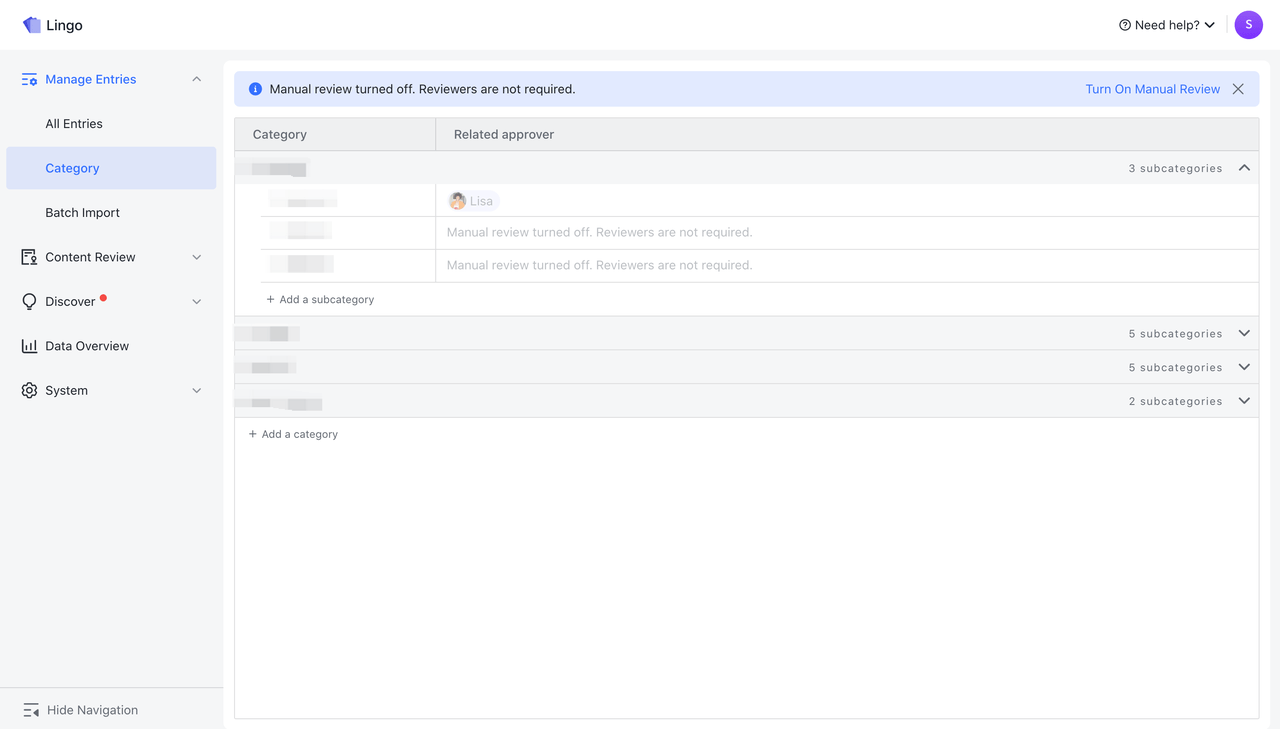I. Get to know Review-Exempt mode
In Review-Exempt mode, content can be published directly without requiring manual review. By turning off Manual Review, you can save administrators time and make it easier for members of your organization to publish and access information.
If your organization has appointed a Lingo administrator, the administrator can switch to Review-Exempt mode by going to System > Unit Settings and turning off Manual review in the Lingo Admin Console.
Note: If your organization hasn't appointed a Lingo administrator, Review-Exempt is the default mode and Manual Review is unavailable.
II. The difference between Manual Review mode and Review-Exempt mode
Lingo offers two modes for generating and managing Lingo content: Manual Review mode and Review-Exempt mode.
III. Quick steps to using Review-Exempt mode
In the Review-Exempt mode, the review portal in the Lingo admin console will be turned off and Lingo administrators won't need to review entries. Administrators can still perform content-related management tasks such as enabling pre-installed dictionaries, requesting new entries, and editing/deleting inappropriate entries.
1. Enrich dictionary content
Lingo offers a series of quick and easy functions for discovering new terms. You can invite members to contribute entries and enrich your existing dictionaries.
- Create and import Lingo entries. You can also import mulitple entries at once.
- Organize campaigns to encourage employees to submit contributions.
2. Routine management of entry content
Lingo administrators can group existing content into categories to make it easier for employees to contribute entries.
- Create and edit categories for Lingo entries so that contributors can place their entries in the correct category.
- Edit and export Lingo entries to help you manage your organization's content.
- View Lingo data to check how content is used.

250px|700px|reset

IV. Related
